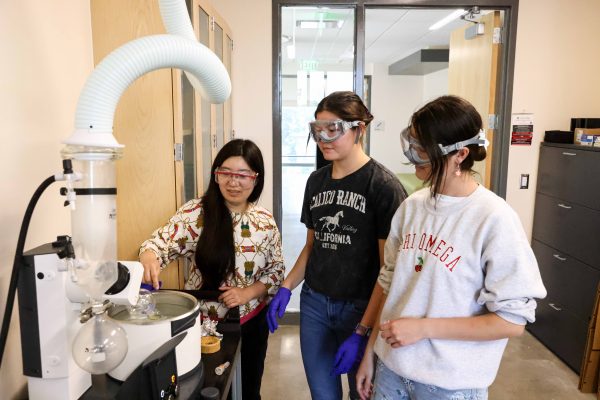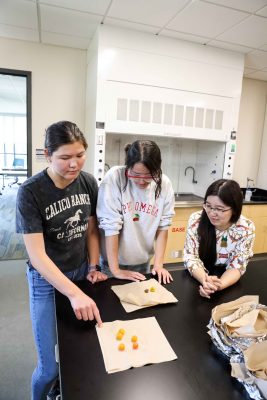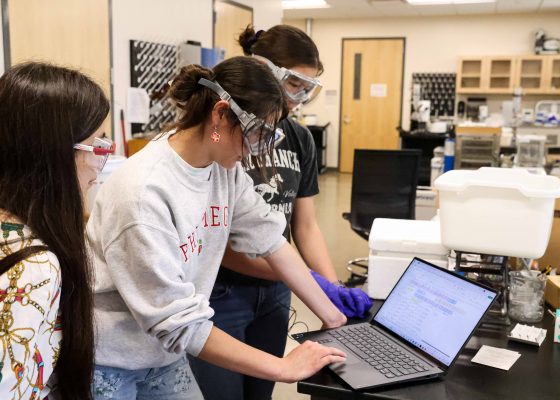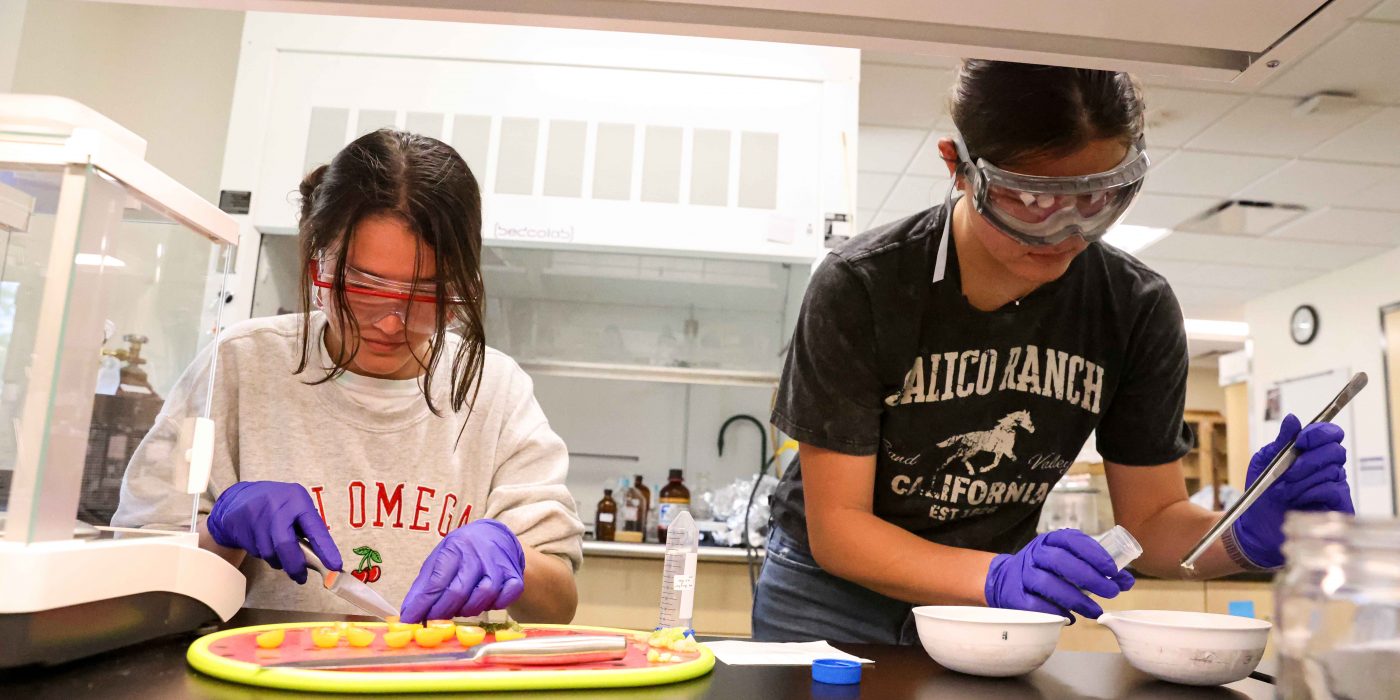CSRI team explores how climate change impacts tomato ripening
Two Cornell students investigated the potential impact of climate change on fruit production by examining how warm temperatures affect the ripening of tomatoes.
Visiting Assistant Professor of Chemistry Bing Yuan worked alongside Cornell sophomores and twin sisters Mac and Tansy Graves during the eight weeks of the Cornell Summer Research Institute (CSRI), which concluded on July 12.
The Graves sisters, who are from Hawaii, and Yuan specifically focused their research on tomatoes because they are a well-studied fruit with a lot known about their genetic makeup.
“We focus on tomatoes because they’re a climacteric fruit, which means that they produce

ethylene and CO2 dramatically during the ripening onset,” Tansy Graves said. “We looked at them throughout the different ripening stages and in different temperatures.”
They kept detailed measurements and worked on various instruments in Russell Science Center.
“We measured the respiration, the titratable acid, the starch, and the percent sugar of our tomatoes during the ripening stage from the green color to the red color,” Yuan said. “We wanted to see how high temperature affects the ripening process like carbon assimilation, and how it affects the fruit productivity and the fruit quality.”

At high temperatures, the fruit’s ability to retain carbon decreases, which means the carbon in fruits releases more into the atmosphere as CO2. The goal is to keep that carbon in the fruit or soil, so it doesn’t contribute to climate change. Scientists are studying the impacts on fruit to understand the impact climate change can have on the food supply.
“For people, especially in developing countries, who rely on growing their own food, climate change’s effect on tomatoes–such as the yield and quality–is important,” Mac Graves said.
The CSRI team will be putting their results into a paper and submitting it to a scholarly journal. They’ve learned that warmer temperatures heavily impact the quality and production of the fruit.
“At room temperature, we can see the fruit that got ripened from a green color to a light yellow color and then to a pink color and a red color,” Yuan said. “But if we store that tomato fruit from the major green stage at 35 degrees Celsius (95 degrees Fahrenheit) it starts from a green color and changes to a yellow color and then changes to an orange color. Then, it stays at the orange color for two weeks and does not go to the right color.”
At 42 degrees Celsius (108 degrees Fahrenheit), the tomatoes started green and turned brown. The chlorophyll decreased dramatically and more than 70% of fruits wouldn’t ripen when placed at room temperature for recovery.

Mac and Tansy say they’ve enjoyed working closely with their professor and getting hands-on experiences in the lab.
“We are doing a lot of stuff with biology and chemistry, and it’s a really good merger of the two,” Tansy Graves said. “It’s been really fun applying what we learn in class to something so focused on one topic.”
And they’re using new research tools.
“A major thing for me is I’ve gotten to learn how to use a lot of different technologies in the lab,” Mac Graves said. “Because I just finished my first year at Cornell, most of the classes were introductory-level classes. We mostly focus on understanding the basics before using any technology. This summer I’ve gotten to use a lot of cool stuff, like the evaporator machine and other machines upstairs in the special room, ‘the big kid room.’ So it’s been pretty cool.”




